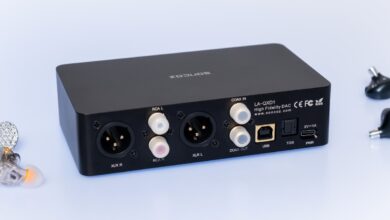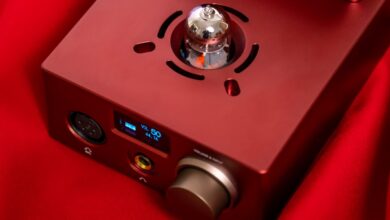
iFi Audio iDAC2 review
You have probably heard by now about iFi Audio. They are quite new to the audiophiles but that was enough to take by storm the affordable audio equipment market.
However iFi are not beginners, they are a division of Abbingdon Music Research (AMR) who already have the expertise and know-how needed to create innovative and modern products.
iFi Audio products are very popular among enthusiasts, for example with the help of head-fi community was created Micro iDSD – a formidable device that offers incredibly value for the price.
I appreciate the fact that iFi does not offer only a simple support for their products, on the contrary they listen carefully for everyone and accepts all suggestions and feedback so that its products can be further improved down the line.

I’m a good example:
Around the summer of 2015 they announced that are working on a universal AC/DC power supply called iPower, that catches my attention.
I own a Sony Discman D-250 that looks impeccable for the 27 years of service it has under its belt, unfortunately batteries for this device were not made in the last 20 years so my only solution is to use the stock 9V switching power supply.
As you all know a good quality power supply can significantly improve audio performance of any dedicated audio player, be it a CD player, a DAC or a streamer.
The problem is that long time ago Sony decided to use a reverse polarity on their devices compared to new 9V adapters, so slowly but surely my dream of using an 9V iPower from iFi started to fade away…
I shoot them an email and asked what can be done to use my beloved portable CD player.
After a long exchange of emails I’ve noticed that the official iPower web page was modified and it seems that the standard iPower package now includes a white adapter that is a polarity inverter can be attached to iPower so that it can be used with vintage audio gear.

Even though I was just a potential customer that was interested in their cheapest product, they not only listened carefully to me the even changed the package of all iPower and now the polarity inverter is included by default in all packages.
How cool these people can be?
Although I was many times exposed to the Micro iDSD, I never had enough time to write a dedicated article about it.
Today I will write about a similar product, it will be about iDAC2 – a small desktop DAC.
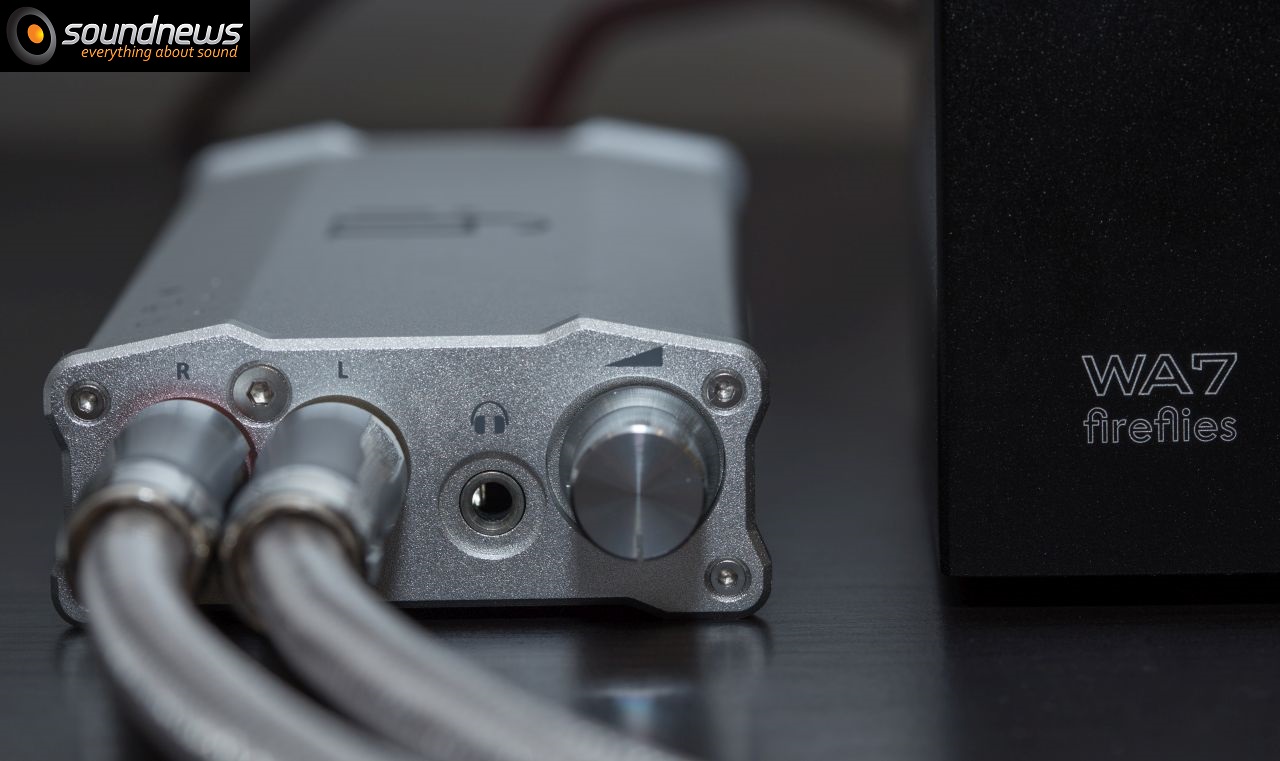
What is iDAC2?
It’s a desktop DAC (external sound card) that only works by connecting it to a PC/MAC, it’s also a digital transport (a S/PDIF interface) that can send a digital signal using a coaxial cable to other audio processors, to receivers, streamers and so on.
It’s also a headphone amplifier, but not a very powerful one.
Basically they took iDSD Micro, removed the internal battery and that very powerful headphone amp that is simply how iDAC2 was born.
While iDSD Micro was and still is an excellent device, many people were not using it as a portable device, others didn’t use it as a headphone amp, that was the main idea why iDAC2 was needed – more affordable that offers almost the same audio performance as in case of iDSD.
At the end of the review I will do a comparison between both DACs.

iDAC2 – On the outside
First of all iFi are among the first audio manufacturers that use recyclable materials, all the packaging is made from recycled paper as well all aluminum construction is done by recycled cast metal.
A round of applause for the environment protection, others really need to take it as a good example, they care so others can too.
The DAC housing is thick and seems to be made with care, its dimensions are quite small and thus it can be easily transported in a purse or a backpack if needed.
On the front panel can be seen the analog RCA out, the 3.5mm headphone out and the volume pot, on the back can be seen the USB input, coax digital out and a switch that changes digital filters of the DAC (For PCM material for example the filters are: Bit-Perfect, Minimum Phase and Standard) with which the sound can be fine tuned as desired.

iDAC2 – Under the hood
AMR and iFi are using top quality components and seems that no compromises were made.
I see Elna Silmic II, TDK audio grade caps, Vishay MELF resistors, a single Burr Brown DSD 1793 chip (vs 2 chips in the iDSD) – the heart of the audio conversion, 2 audio oscillators, J-Fets and Bipolar transistors that can be found only in high-end equipment.
iDAC2 natively plays DSD256 (DSD 1X, 2X and 4X) as well as PCM material up to 32 bit/384 kHz.
USB connection is asynchronous so noise that is coming from PC is drastically lowered and audio files are played Bit-Perfect, iFi calls this ZeroJitter Lite technology.
Internal headphone amp is more than decent, it offers 350mW in 16 Ohms, but I would not consider it as a top performer, that is the case of iDSD: 4000mW!
Lets get to the most interesting part.

Audio Performance
As usual I have used a vast collection of music to proper evaluate this small device.
Gear used was: PC > iUSB3 > iDAC 2 > Sennheiser HD630VB, HD650, Momentum 2.0 headphones > Audioengine A5+ active speakers
I had attempted to connect Sennheiser HD800S headphones, but internal headphone amplifier did not have enough power to power them properly.
iDAC2 was left for a few days working to be sure that I am listening to it at it’s full capacity.
First impression that iDAC2 left on me is that everything is well placed in the audio field, stereo image is very well rendered and I can easily walk through quality recordings.
I was surprised that I can clearly hear the rise and the decline of every musical note in a easy and unstained manner.
At first audition the weight and the punch of the bass and mids really impressed me, this qualities rarely can be attributed to devices of this size and weight.
When iDAC2 was connected to iUSB3 I’ve heard even a more palpable bass, it was just real, I’ve had an impression that it is rendered on multiple levels.

For bass tests I have used something unusual, having as a reference bass guitar and not electronic music.
Listening to Black Sabbath debut album, track Wicked World I simply stopped what I was doing and listened mesmerized the recording. Bass guitar is so well played in this song, going really low in the recording, that it seemed like it was later added by mastering, it felt like it is a separate entity from the rest of the recording.
Rarely I hear bass guitar so well defined that it’s easy to ignore other instruments and just focus only on the instrument I wish from a particular song.
Listening to Negura Bunget – Tesarul de Lumini, on the first ±40 seconds in the background can be heard a faint bass. On iDAC2 this bass becomes overwhelming and it seems to appear from a black background.
Bass playback is impressive from the first seconds of audition.
Going on to a more traditional bass tests as Silent Strike, Chemical Brothers & Co bass jumped in front of me with its quickness and depth.
Lately I am passionate about Beethoven’s sonatas and I am on the hunt for the best versions recorded, if you have suggestions I will gladly listen to them.
Horowitz, Goode or Hewitt versions didn’t impress me that much, however the Yundi Li version left a really good impression.
Being 24 bit/96 kHz and recorder at -13dB it has extraordinary dynamics.
I needed to rise the volume with about 20% compared to other versions to have the same SPL.
The correct rendering of piano is hard to achieve and to keep up with Sonata no.14 in C minor, 3rd movement you need a really good DAC.
Directing in my imagination I realized of the speed and good dynamics this DAC possess.
The piano came to life, it had good weight to it, the visceral and fast sound of 14th Sonata was surprisingly real, closing my eyes I imagined myself in front of the grand pianist.

Moving slowly on to Pink Martini – Hang on Little Tomato it was interesting to me how a well recorded jazz album and a sweet voice would sound.
Interesting is the fact that transparency and detail retrieval of this DAC did not influence in a bad way the naturalness, on the contrary, using Bit-Perfect preset I never felt that sound is harsh, bright or just ear tiring.
Details, extra airy sound combined perfectly with musicality and warm tonality of jazz music.
U Plavu Zoru track always touches me. Some devices do it endearingly and melodiously, others cannot keep up with it’s fast transients and tempo, iDAC2 belongs to the first category.
I gladly found that mushiness effect was never heard, not even once. Each time I felt that between notes there is a void that delimits them.
The sound is easy and has a good flow, the notes are well delimited from each others and never create ringing or unwanted distortions.
Ending my playlist with Pat Benatar, Nirvana, Led Zeppelin and Phoenix I focused my attention more on drums, cymbals, acoustic and electric guitar as well on percussion from the background.
Taking as an example Phoenix – Mica Tiganiada on good equipment it can be clearly heard in the background the dulcimer and bass guitar that is pretty well delimited from the electric guitar. All 3 voices are distinct one from another, high dynamics and its snappy soul are rendered really well.
As an observation iDAC2 when just powered on sound a bit artificial and uninviting, after approximately 20-30 minutes it sounds significantly more dynamic and melodious.
As I’ve said at the start stereo image is really well placed, it even becomes holographic once an iUSB3.0 or an iPurifier2 is used, about those two a separate article will follow.
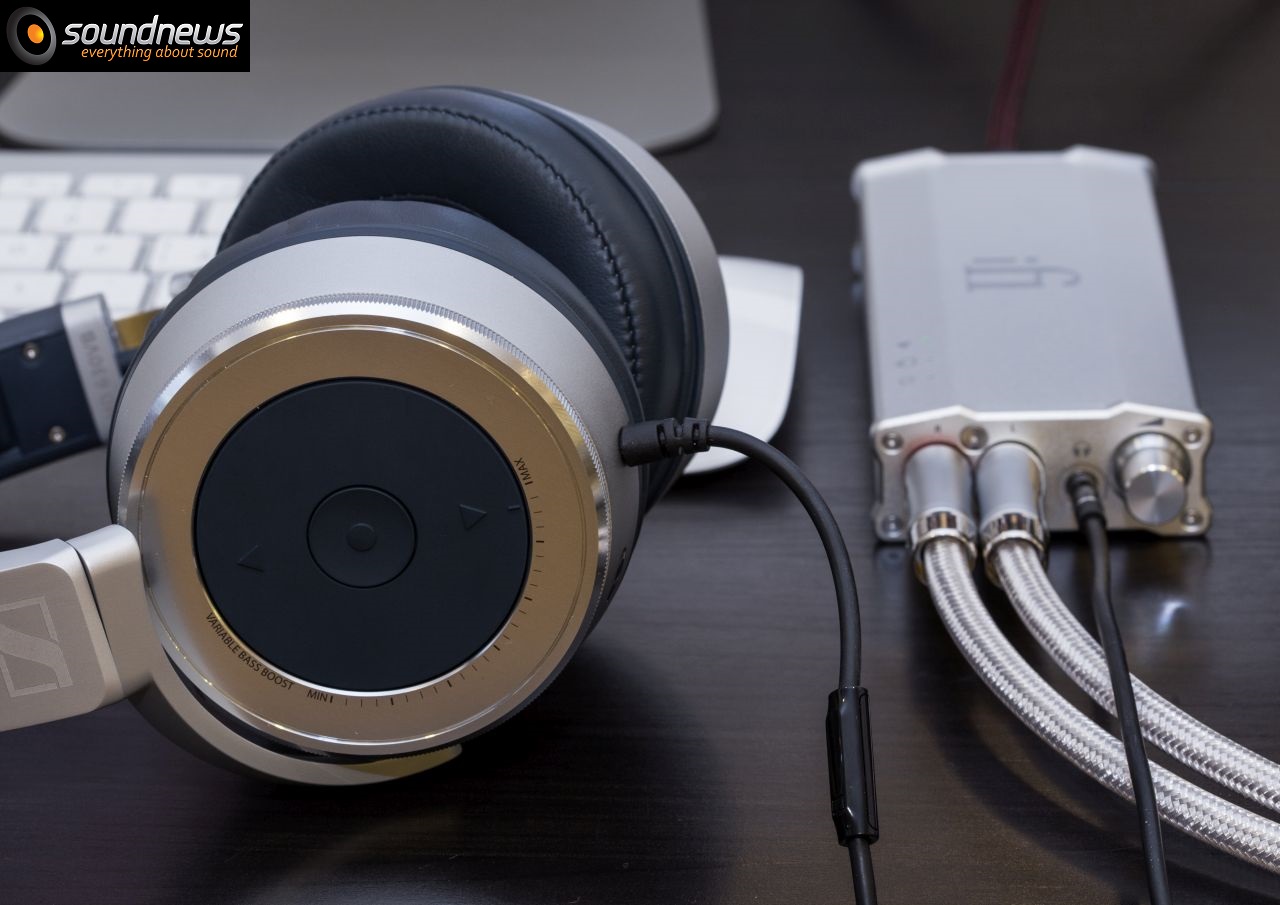
Listening to headphones I understood that it works well with high sensibility ones, using portable headphones was not a problem.
However on Sennheiser HD800S and on Audeze LCD-X/XC although volume was appropriate I have started to loose on dynamics and speed, soundstage shrinked and holographic sound became bi-dimensional. I blame internal headphone amp that feels more like an added bonus. For hard to drive headphone I have used dedicated electronics such as Woo Audio WA7 Firefly or Matrix HPA-3B.
Comparison between iDAC2 and Micro iDSD was made, but only on PCM material that means about 99% of my music, differences were minor, on average quality recordings I’d say that differences are not notable and on a simple blind test I would not differentiate them.
I mention that iDSD sounds slightly airier and has a tad more detailed presentation, but the difference is really small.
On well recorded music iDSD on high frequency range offers more information and because of that it’s sounds somewhat airier than iDAC2.
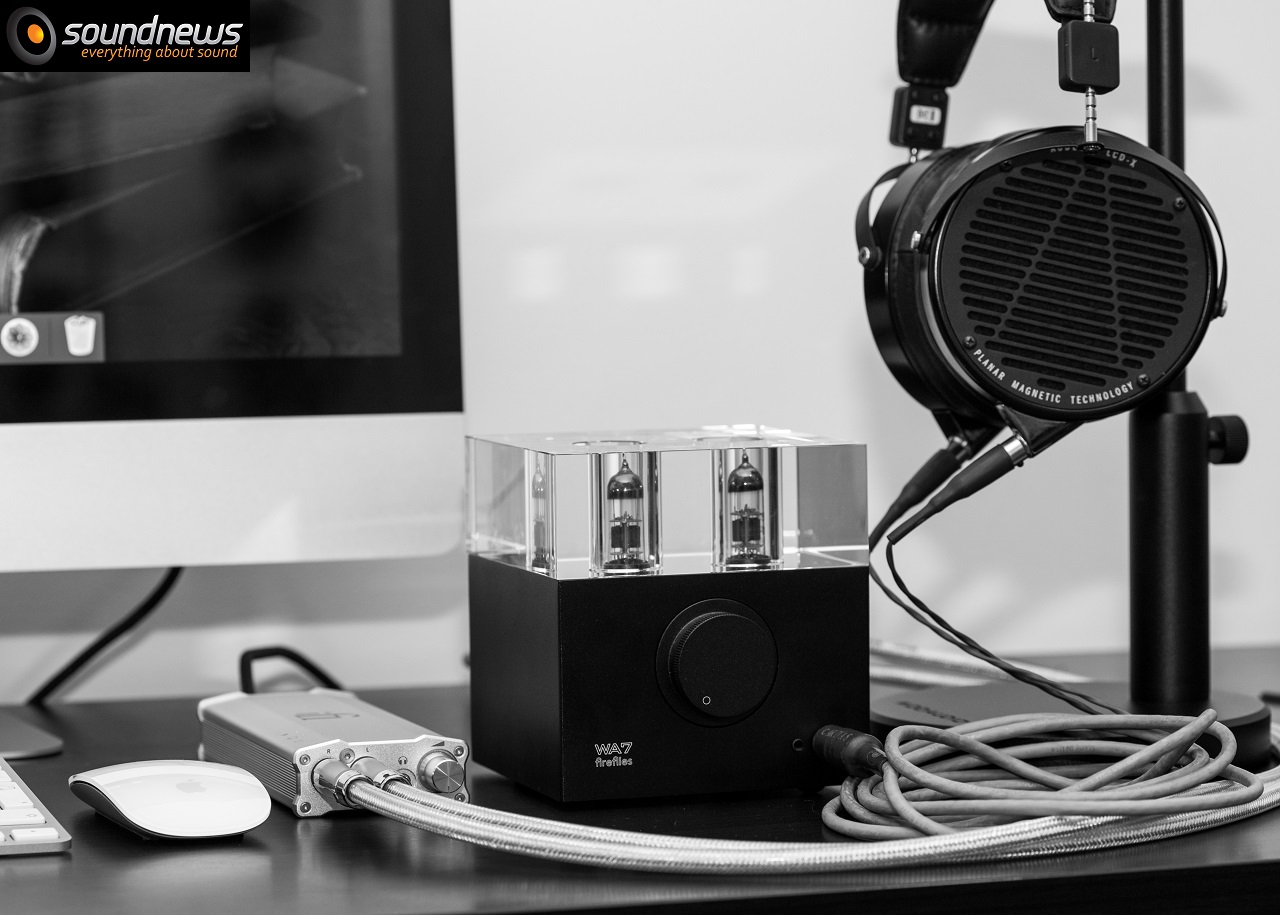
Conclusions
What I want to outline is that if headphones has no interest to you then iDAC2 would be my recommendation. If you are interested in listening to speakers as well as headphones iDSD might be a better deal as it works extraordinary with both.
Construction is solid, I find the design simple and pleasant.
Who wants to go All In with iDAC2 and iUSB3 a separate rack can be bought, it’s called iRack.
The sound was the pleasant surprise, transparency, details and extra airy presentation of DACs with Delta-Sigma modulator is not a surprise at all, the surprise was the naturalness, the heavy outline of the notes, fast and deep base and well as real and palpable mids, something like this can be rarely attributed to a Delta-Sigma design, bravo iFi!
iDAC2 impressed me quite much and in my mind I kept reminding myself that I don’t need one, but it seems that I’m failing at that.
Pros:
- Solid construction, irreproachable quality
- Small dimensions > easy to carry
- 3 in 1 device (DAC, digital transport, headphone amp)
- Great details, transparency, easy to pick micro-details
- Natural, full and rich tonality sound
- Bass has multiple layers, impressive
- Lack of harmonic distortions
Cons:
- Being fed only by USB bus, its easily susceptible for digital noise from PC (an iPurifier2 is mandatory for that cause)
- Internal headphone amp does not keep up with power hungry headphones
- Lack of other digital inputs
Associated Equipment:
iFi Audio iDAC2, iDSD, iUSB3, iPurifier2, Sennheiser HD800S, Momentum M2.0, Audeze LCD-X/XC, FiiO EX1, K5, Audioengine A5+, Woo Audio WA7, Matrix HPA-3B





